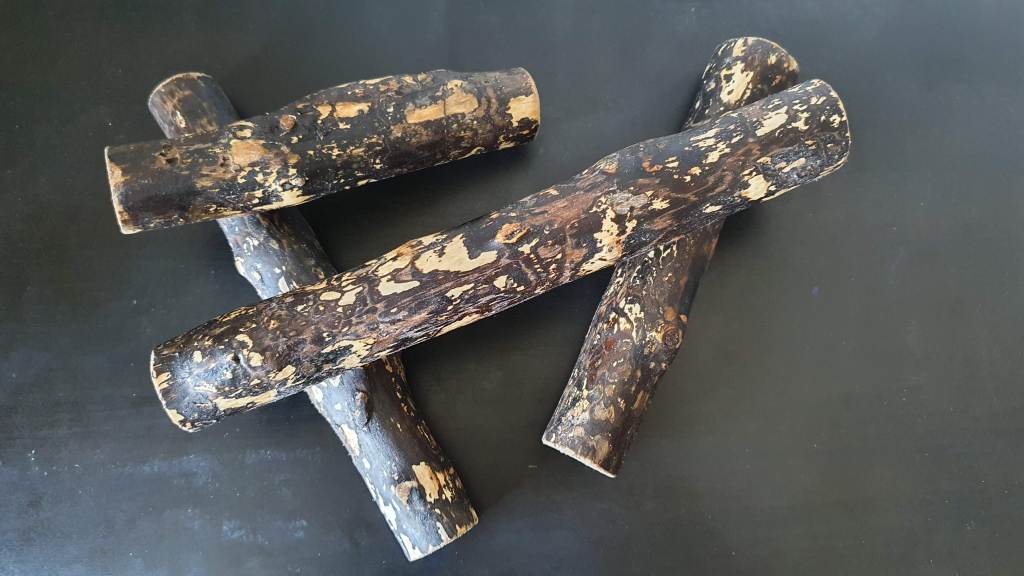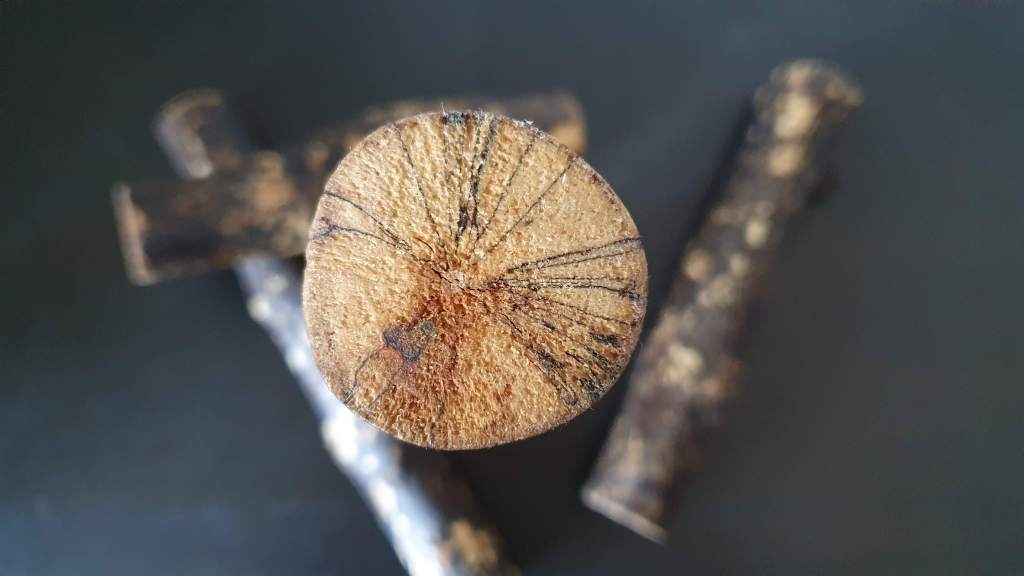It seems at the minute, with studies and quarantine, that I’m only ever at home or at the nearby woods when I want to go for a walk. It has been great seeing the woods come to life around me, from early spring when I got back from uni, to now, nearly in the summer months, with plants and fungi really making themselves known.

One of the more interesting things I’ve been finding out about lately is spalted wood. On one of my outings, I saw a cluster of branches piled in the leaf litter with the characteristic black and white mottling, standing out vibrantly against the backdrop. Spalted wood is nothing new to me, but I’d never properly read into how the process of spalting occurs. Typically, the black and white zonation is caused by the colonisation of dead wood by multiple individuals of a species of fungus (“intraspecific antagonism”), in which the fungi “defend” pockets of resources throughout the wood from one another (causing the pigmentation) and subsequently utilising the nutrition (causing the bleaching). However, one species of fungus, Xylaria polymorpha (Dead Man’s Fingers) is known to cause spalting without the presence of other individuals, and so colonisation will typically lead to immediate spalting.
I suppose I’m quite lucky in this instance, then, as my woods are absolutely teeming with X. polymorpha. In spring, as in my last post, the Dead Man’s Fingers grow pretty abundantly in strange, blue-green clutches. A large, old branch near the growing fungi was of a decent size and relatively dry, so I got to work breaking it into four pieces, and brought them back home to clean up.
As this wood is often quite degraded, stripping the remaining bark and imperfections off is easy to do with coarse sandpaper. A saw was used to clean the ends off into a flat cross-section, which revealed the penetrative hyphae reaching to the surface from the heartwood (the fibres of which often join up with the zonation lines quite pleasingly). Finally, an overnight bath of a dilute PVA solution, followed by two coats of boiled linseed oil were used to strengthen and seal the wood. These final steps do well to bring the vibrant colours of the wood out.

X. polymorpha spalted wood. 
Close-up of the cross-section with pigmented hyphal filaments visible.